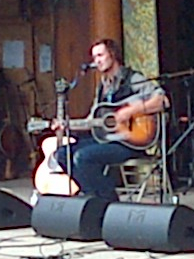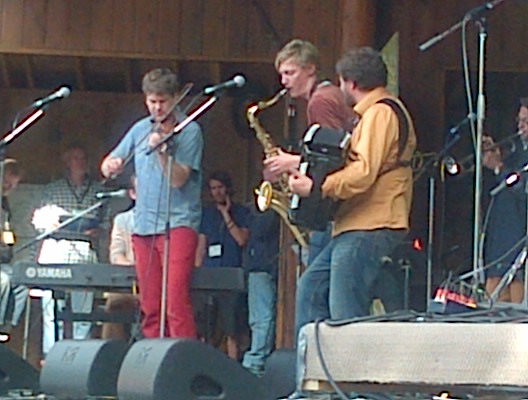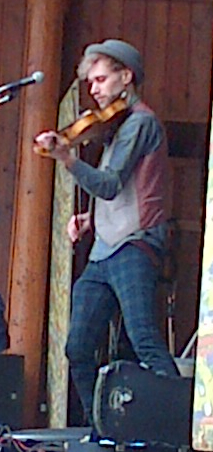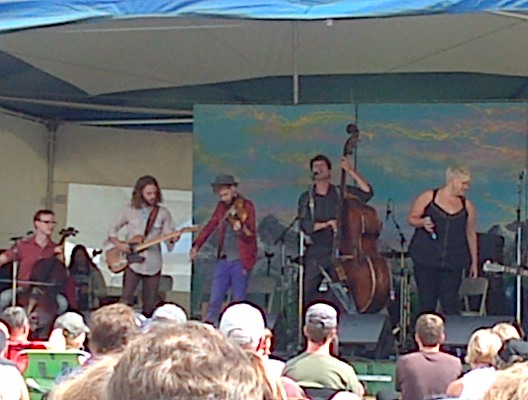Canmore Folk Music Festival, 3-5 August 2013
Nobody wants a blow-by-blow account of three days packed with music. The two questions about a festival are ‘should I go there?’ and ‘who was good?’.
The first is easily answered: hell, yes – you definitely should go.
Canmore has a a beautiful, almost ridiculously spectacular, setting. Just one of the Rocky peaks which surround it could be the basis for a pretty decent tourist industry but they’ve got dozens, coming at you from all angles. Centennial Park, the festival site, is gorgeous, with lots of trees to shelter you from the (frequently) hot sun and (equally frequently) sharp storms. Plus it’s in the middle of town, with easy parking and bars and restaurants 5 minutes walk away should you tire of festival food…
It’s intimate: a crowd of about 5000, who seem open and appreciative of different styles. You can always find a decent view and the sound is generally excellent – with a standard quibble about bleed between the small stages and a particular one for the main stage that the first few rows are in front of the PA speakers and so you’re subject to the vagaries of the on-stage mix if you get too close.

He has a clear strong voice, good finger-picking chops and his songs have both strong melodies and some striking lines: try his sympathetic portrait of ‘The Waitress’ who
…traded her twenties for a job that never promised more
Her dreams fell asleep on the top bunk and woke up on the floor.
He also has an engaging stage manner and tells a good story – some several times, between workshops and main stage. But when they’re as funny as his intro to the sweet (and as yet unrecorded) ‘Peter and Jenny Lee’, you’ll forgive that. And have some confidence that, three albums in, this is a musical career with plenty more to come.

His covers test provided reference points ranging from Bruce (‘I’m On Fire’), through Jackson Browne (a beautiful, reflective ‘These Days’) all the way to a folkified Beastie Boys‘ ‘Fight For Your Right (To Party)’ (and, yes, it worked). Then there’s a track on his debut album, Break It To Me Gently, called ‘We Sing The Beatles’ about passing a guitar around which also name checks Joni Mitchell and Leonard Cohen. He’s successfully building his own strong songwriting on some good foundations. Add in a beautifully fluid-wristed fiddle technique and the confidence to tackle testing tunes like ‘Hangman’s Reel’, and you’re on to something very special.
I was reminded several times of a young Loudon Wainwright: by some similar gurning and grimacing as he hits the notes, but also for the sharpness of his observation and sly humour – he’s another born raconteur, in both his songwriting and his on-stage introductions. I can still see – and almost smell – Chicago Bob, the retired bank-robber Braden encountered in the Commercial Hotel in Old Strathcona and who inspired ‘Life’s A Picture’…
So, a very strong Eden On The Line recommendation that you check out young Braden at your earliest opportunity, live, on record, or indeed here on YouTube.


He plays a 5-string fiddle and deploys its extra range to great effect, at home in a wide range of styles: his own compositions use looping to set up atmospheric soundscapes; he seems equally at home rocking out or blending in to more traditional tunes.
Band leader Oliver Swain seems to have a real knack for gathering excellent musicians around him and bringing out the best from them.

Thank you, Canmore. Next stop, Edmonton.
(from Eden On The Line)




